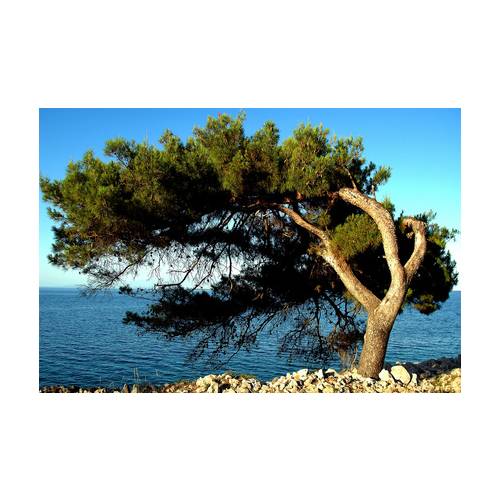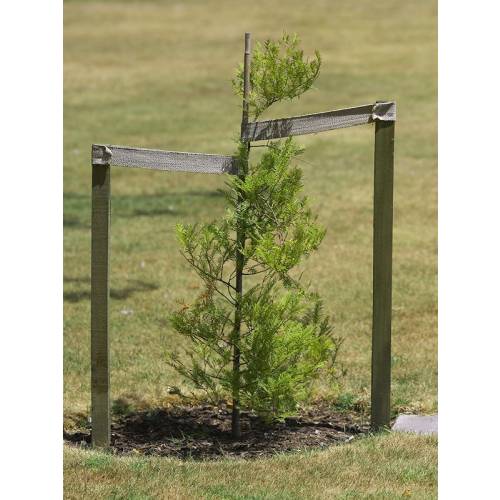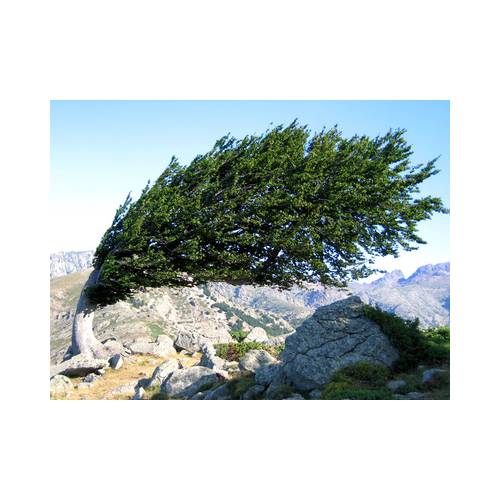A whirlwind of planting!
Air in motion represents one of the most important weather conditions in a garden. Nevertheless gardeners are more concerned about sunlight or rain, which are certainly important, but they sometimes ignore wind, and thus are in for unpleasant surprises after a gust...
Identify prevailing winds
The most intense winds have local names and are well known by the elders (autan, amont, mistral, tramontana, fowan, bora, marin, helm wind, custard wind, dryth, etc.). Ask the neighbours about the wind if you have just arrived. In a large part of continental France it is the westerly wind that makes up most of the wind. Storms come primarily from the west and one must take this into consideration when planting a tree: place a solid stake to the west of the tree and drive it in, leaning into the direction of the prevailing wind. When this wind blows the stake will hold the young tree perfectly. Trees with rather long trunks (at least 1.50 m and often longer) are particularly affected. That’s why we call them “hautes tiges” and also “arbres de plein vent” (standard trees).
Occasional Winds
They are difficult to predict. A particular weather episode can always produce winds coming from unusual directions. Consequently, one must use a guying system for tall, poorly-rooted trees to withstand such unexpected situations. You will notice that tall trees are guyed with three stakes: one is always situated in the direction of the prevailing wind, as explained above. But the two others are there to brace the tree in case the wind blows precisely in an unexpected direction.
Turbulence
There are also winds created by the layout of the premises, which are often called “air currents.” This is actually turbulence caused by the proximity of buildings, hedges, tall walls, etc. Its influence on plants can be as strong as the prevailing wind, especially next to tall buildings. This turbulence is particularly harmful to plant growth. The risk is not that the plants will be uprooted since air currents are rather constant. But these very localized winds can hinder the growth of plants with thin leaves such as maples with lobed leaves (many strips), which dry out and grow poorly. Air currents can also knock floral buds off of fragile plants such as certain climbing plants. Finally, they can quite simply change the normal look of the plant, which will grow somewhat slanted.
A sculpting wind
Plants are deformed by even a light continuous wind. The blowing air favours the buds which are sheltered from the wind. On the contrary, the exposed parts have a tendency to grow less and to form stockier branches. The result: the tree grows more on one side than the other and looks like it is pushed by the wind. The effect is spectacular seaside, where the plants are sculpted by a sort of wave. But in the garden, the effect of continuous wind will make a tree lean (apple trees for example), not all at once but year after year. The wind issue must not be ignored in the garden!





